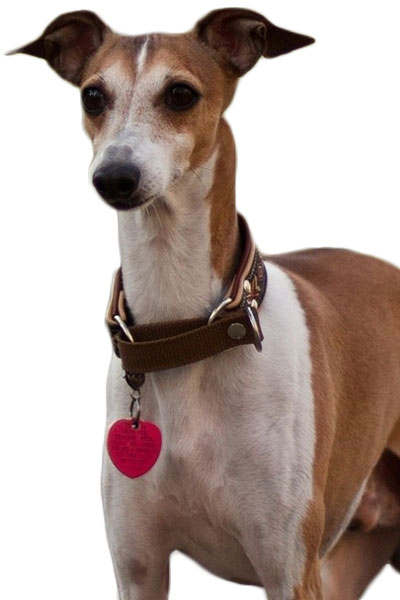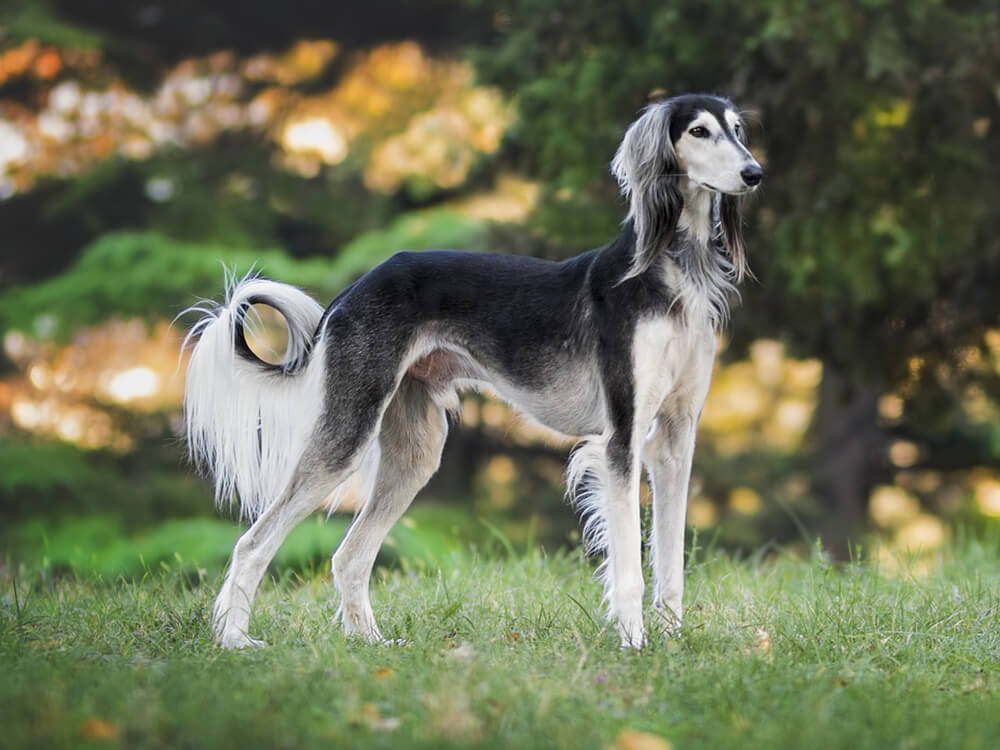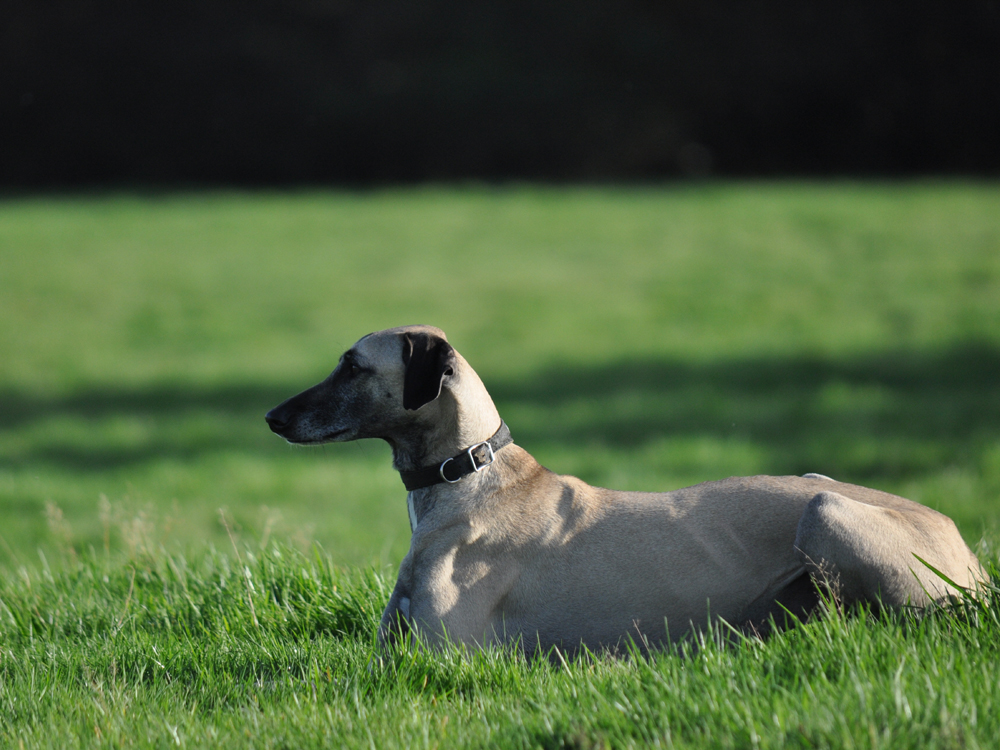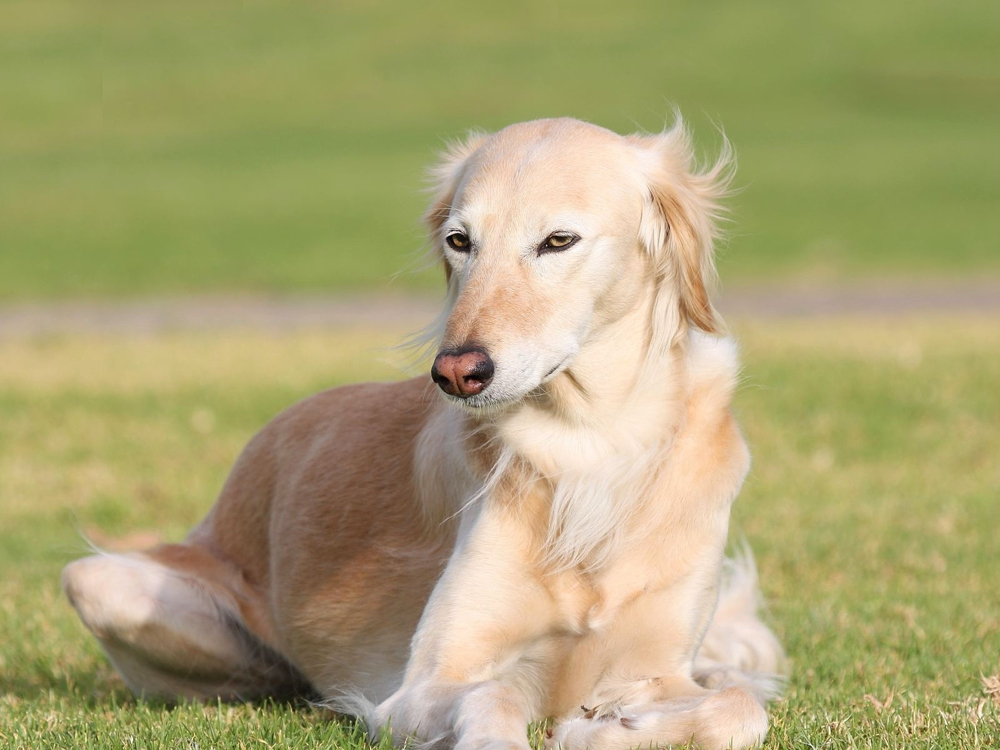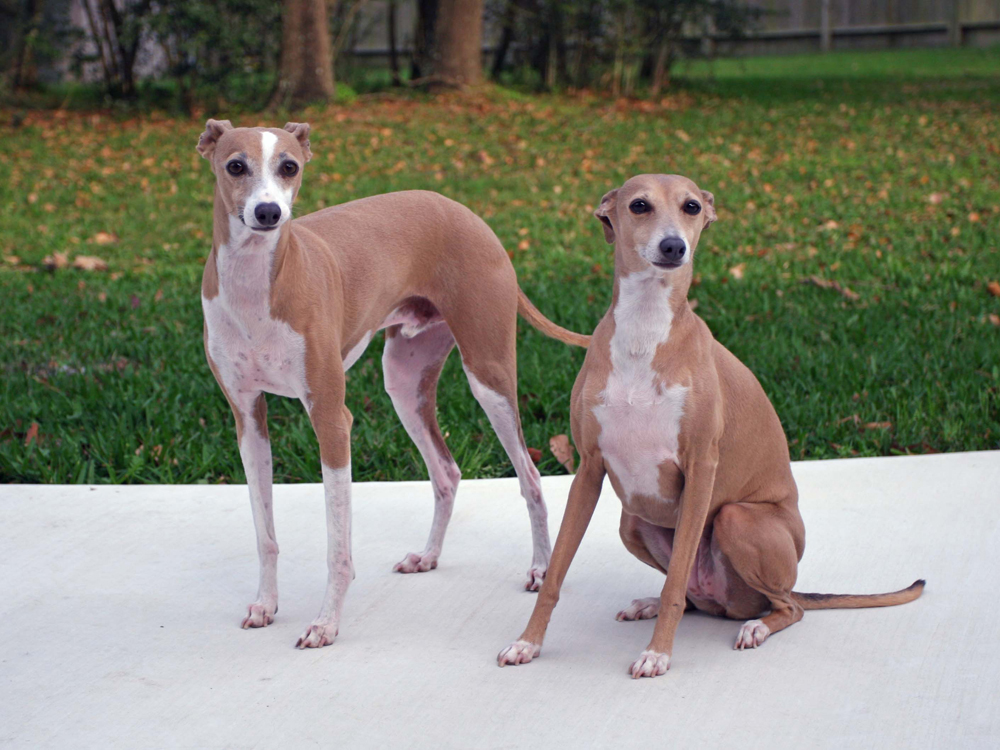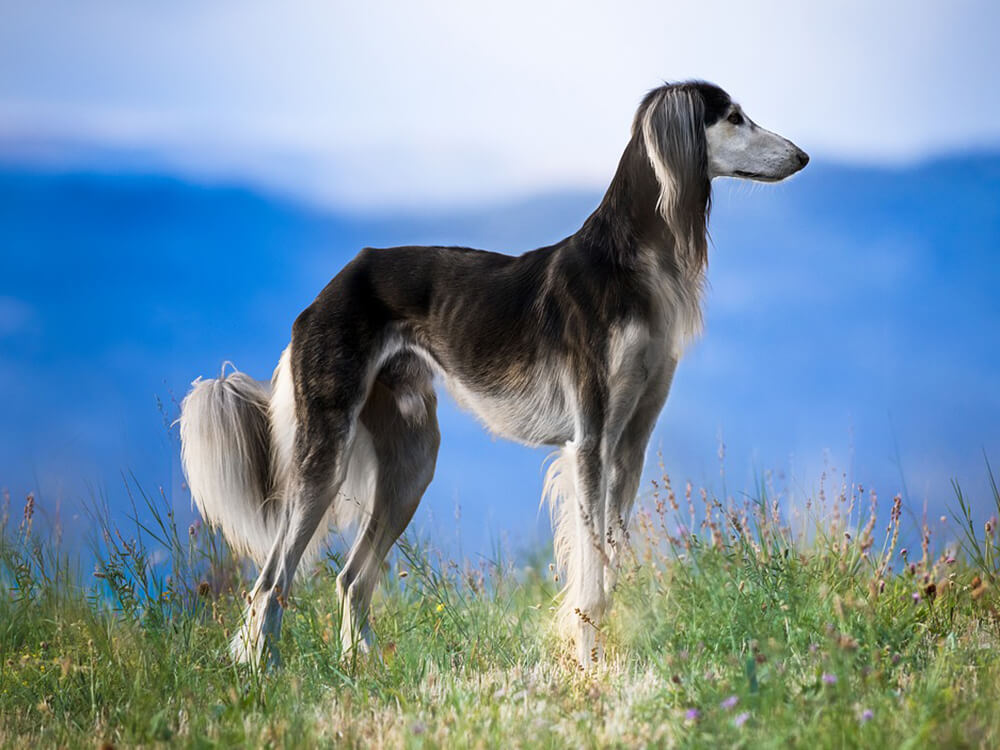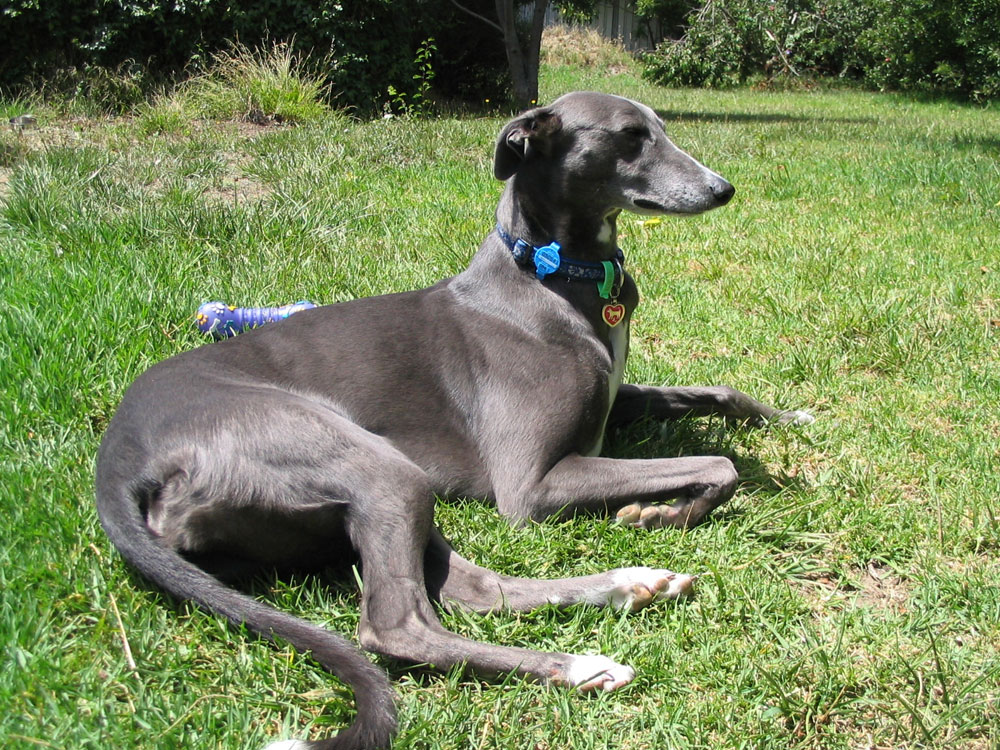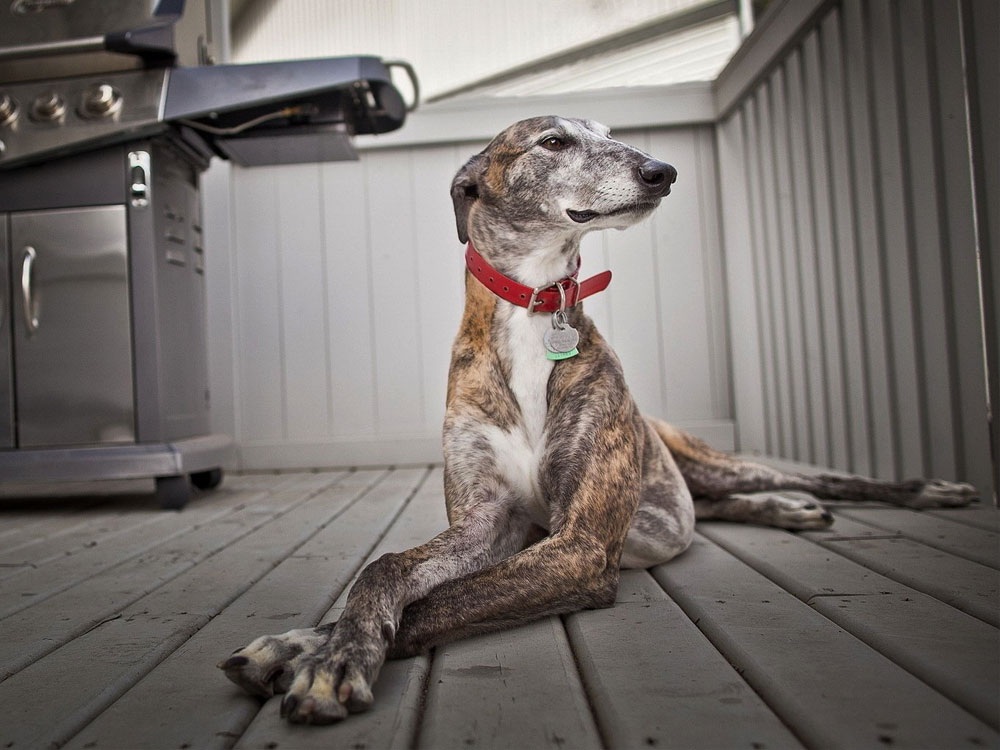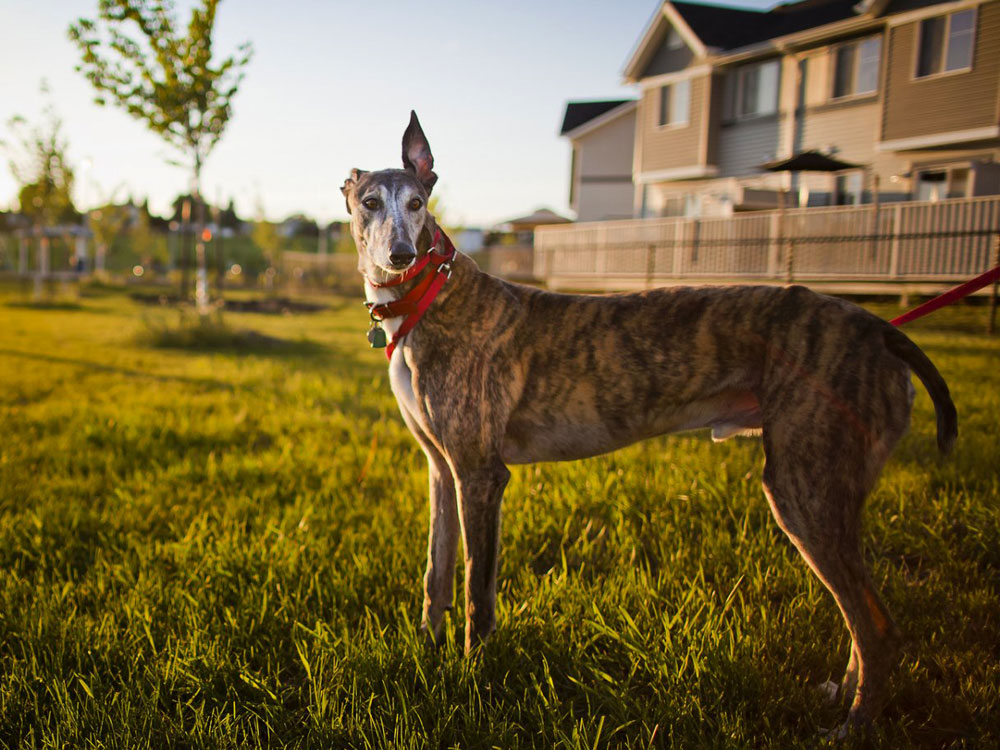
Greyhound Breed Pictures
Vital Breed Stats
| Height: | 71 - 76 cm M | 68 - 71 cm F |
| Weight: | 29 - 32 kg M | 27 - 29 kg F |
| Breed Group: | Toy Dog Group |
| Life Expectancy: | 13 - 15 years |
| KC Registered: | No |
Breed Characteristics
| Size: |  |
| Grooming: |  |
| Exercise Level: |  |
| Trainability: |  |
| Barking Level: |  |
| Good with Children: |  |
| Good with other pets: |  |
| Affectionate: |  |
| Protective: |  |
| Cost to Keep: |  |
Give a thumbs up if you love the Greyhound

0
More About the Breed
History
The Greyhound’s origin has always been linked to Ancient Egypt as depicted in drawings found on tombs dating back to 4000 BC. However, there have been no scientific basis to this claim. In fact, DNA results in 2004 suggest that this breed may not be related to the Saluki or Persian Greyhound found in Egypt, although they may look similar.
The breed arrived in Europe during the Dark Ages, which garnered great respect for being a remarkable sighthound that went after large game like wolves, deer and antelopes. Since royal game reserves were protected at that time, laws prohibited people living within 10 miles of the king’s forests from owning Greyhounds. Only nobles and the elite were allowed to own this breed in 1016.
Greyhounds then rose to popularity in England as they were used for hare coursing and then later on racing. They are dubbed as the fastest dog and the second fastest animal in the world, only next to Cheetahs. The breed now remains a popular choice as a pet companion because of its gentle nature and patience for kids. The Greyhound is Kennel Club registered.
Appearance
The Greyhound is an iconic breed that is pretty easy to identify. It is an athletic and muscular dog that stands 68 to 76 centimetres at the withers and weighs 50 to 88 pounds. This strongly built hound has a long head, strong neck, deep chest, and spacious body. It has intelligent-looking, oval eyes, rose-shaped ears and a powerful jaw. Built for speed and performance, it has arched loins, powerful hindquarters and agile limbs that allow it to cover huge distances at very high speed.
According to The Kennel Club, the acceptable colours are white, black, red, blue, fawn, brindle, and fallow, or any of these colours broken with white.
Grooming
The Greyhound's short, fine and close-lying coat is easy to groom. It is a low shedder, which can be managed by daily brushing. Bathing can be done as needed and a dry dog shampoo will keep its coat sleek and healthy. As a breed prone to dental issues, brushing with a vet-approved toothpaste at least twice a week is necessary. Chew bones and treats will also help in removing tartar build-up.
It is important to keep its ears dry and free from debris to avoid infection. Accustoming your dog to having its nails trimmed will make the experience pleasant and lessen costs at the vet’s or groomer’s.
Temperament
Intelligence
The breed is very intelligent and can be a great option for first-time owners because it is a people pleaser. It is also highly trainable and would eagerly learn new tricks. Since it is sensitive by nature, it does not respond to harsh trainings. It would do well with gentle words and praises. While it is quite receptive, its prey drive can get in the way. Even a well-behaved Greyhound could not resist a small animal it believes it should chase.
Breeds can have particular temperament and intellect tendencies but it does not mean that all dogs will fit the bill. The development of its characteristics can also be influenced by environmental factors.
Nutrition
- Senior and less active: up to 1,600 calories daily
- Typical adults: up to 1,700 calories daily
- Physically active/working dogs: up to 2,200 calories daily
Feeding
Health
Exercise
Cost of Ownership
Realistically speaking, raising a large dog is more expensive than owning a small one because its needs are also bigger. High quality food for your Greyhound will cost around £40 a month. Treats and vitamins will be an additional £20 per month. Basic equipment such as beds, dish bowls, toys, and grooming supplies will be around £100.
When it comes to the health of your dog, you need to be prepared because as animals, they are likely to get sick. Routine health checks, spaying or neutering, annual vaccinations and other preventive measures can add up to about £1,000 a year. Pet Insurance coverage can be around £20 to £50 a month, depending on the policy you choose.
Not to mention, these expenses do not include the price of a well-bred Greyhound, which can be anything from £300 to £600.
Is a Greyhound Right for You?
- The Greyhound is affectionate and loyal but tends to have separation anxiety.
- It is a highly intelligent dog that is responsive to trainings.
- This breed has a strong prey drive.
- Its coat is easy to maintain but it has a very sensitive skin.
- It is prone to certain health conditions such as bloat and drug sensitivity.
